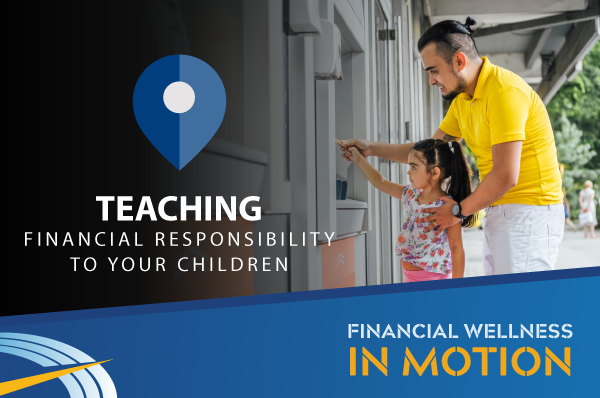
Raising financially responsible children is a goal many parents strive to achieve. In today’s fast-paced world, where consumerism is omnipresent, instilling good financial habits in your children can set them up for a lifetime of financial stability and independence. Here are some effective strategies to teach your children about money management, and how our new youth account, the *Junior Jetsetter*, can be a valuable tool in this journey.
1. Start Early with Allowances
One of the most effective ways to teach children about money is by giving them an allowance. This allows them to make decisions about spending, saving, and even donating. Start with a small, regular amount, and encourage them to set aside a portion for savings. Discuss their spending choices and praise smart decisions, but also allow them to experience the consequences of poor choices—this is how they learn.
Junior Jetsetter Tip: With the Junior Jetsetter account, your child can start learning about saving from a young age. Encourage your child to deposit part of their allowance into their account regularly, helping them to build their savings over time.
2. Involve Them in Budgeting
Involving your children in household budgeting can be a powerful teaching tool. Explain how money is allocated for different needs and wants, and how important it is to live within one’s means. Simple exercises like planning a family outing within a budget can help them grasp the basics of financial planning.
3. Encourage Saving for Long-Term Goals
Teaching your children to delay gratification by saving for long-term goals is crucial. Whether it’s saving for a new toy, a trip, or something special they want, helping them set goals and encouraging regular savings towards these goals will instill discipline.
4. Teach Them About Needs vs. Wants
Helping children differentiate between needs and wants is crucial for sound financial decision-making. Explain the difference between essential expenses (like food and clothing) and non-essential purchases (like toys or games). This distinction will help them prioritize their spending and avoid impulsive buys.
5. Lead by Example
Children often learn by observing their parents. Demonstrating good financial habits—like budgeting, saving, and avoiding impulse buys—will provide a strong example for them to follow. Be open about your financial decisions when appropriate and explain the reasoning behind them.
Conclusion
Teaching your children to be financially responsible is one of the greatest gifts you can give them. By starting early, involving them in financial decisions, and using tools like the Junior Jetsetter account, you can equip them with the skills they need to manage their money wisely and build a secure financial future. With the Junior Jetsetter account, your child can begin their financial journey with the support and resources they need to succeed. Encourage them to take control of their finances today, and watch as they grow into financially responsible adults.
For more financial tips and resources, visit our Financial Education Center.


